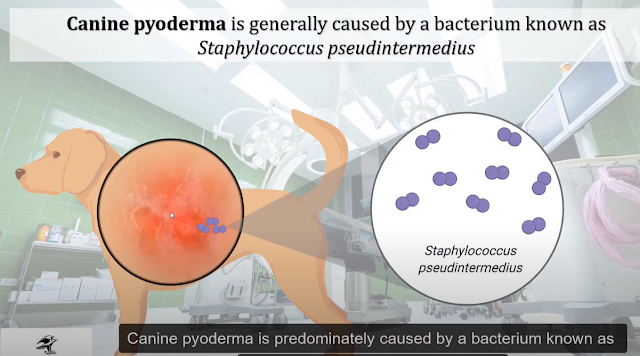 |
| Still from Nicole Pavich's 2020 VYT entry |
We are excited to bring you Part 2 of our RED Alert series that's dedicated to sharing our Visualise Your Thesis (VYT) experience and tips.
In this post, we build on the research communication strategies that were discussed in Part 1 by flagging some of our favourite resources that could be used to bring your VYT entry to life. We also consider the importance of emotionally engaging viewers in your work and offer some suggestions as to how this might be achieved. Finally, we discuss how to promote your research online.
RESOURCES
The best VYT entries utilise accessible resources creatively! Below, we have identified some digital and physical resources that could be used to craft your entry:
- Stock and/or archival videos and images – Websites including Pexels, Dareful, Videezy and Unsplash contain stock footage and images that can be manipulated without constraints [Edited 26 May 2021: You might also find Mazwai useful for stock video]. Public domain material can be used in your entry and sourced from sites like Public Domain Review and Internet Archive. Please note that it is critical to check, save and abide by the licencing details associated with each item you download for your VYT submission - the University Library's Copyright Hub can provide you with advice and further information.
- Household items – You might like to shoot your own content on your smartphone and think about how you could use household items such as chalk, food, children’s toys, wool, etc., to demonstrate key concepts and ideas in your research. Check out Jacinta Humphrey’s inspiring post recounting how she used Lego to communicate her research!
- Editing programs – You should also consider which program you will use to piece your entry together. Microsoft PowerPoint allows you to easily compile VYT content. Camtasia is a user-friendly screen recording and video editing program that is licenced for La Trobe University researchers to use. If you would like to use more advanced software, Da Vinci Resolve is a powerful editing program that is used by Hollywood professionals and can be downloaded for free!
EMOTION
According to eminent film editor and sound designer Walter Murch, emotion is the most important thing to prioritise when cutting films (In the Blink of an Eye, 2001, p. 18).
A VYT entry that engages people emotionally may help them to care about your research. When crafting your entry, you need to consider how you want the viewer to feel when they watch your work. For instance, is there a particular tone or mood that you want to evoke in your entry? If so, how will you communicate this?
 | |
| Still image from Stephanie Lynch's 2020 VYT entry. |
 |
| Still image from Stephanie Lynch's 2020 VYT entry. |
Below, we have highlighted a few ideas about how to inject emotion into your work:
- Timing, pace and rhythm – the timing, pace and rhythm of your entry can greatly impact how it is perceived. Therefore, it is key to consider when each element in your entry appears on screen and how long it is displayed. For instance, fast cuts may cultivate a sense of chaos. Slow cuts have potential to build tension. You can also use visual transitions and effects to alter pace and create rhythm.
- Sound – Sound is a powerful device that can be used to establish mood and tone. You may like to consider how you can use not only spoken words but also atmospheric sounds, music, and sound effects to elevate your visuals.
- Colour – Colour psychology tells us that colours bear meaning and have the potential to influence how we feel. When producing your entry, you may like to think about how you can use colour to underscore emotion.
Using social media to boost your research
So, you have spent the last few weeks creating an engaging, insightful and accessible 1-minute video for the VYT competition, but what else can you use this video for?
There are multiple ways to maximise the use of your video! For example:
- Post your video on your social media platforms (eg. Twitter, Instagram, LinkedIn and Facebook). You can pin this video to your profile so that when researchers, employers or funding bodies search your name, they have an easy way to understand what your research is about!
- Use your video for marketing - offer your video to be used at Open Days or showcase nights that share La Trobe University research with the broader community.
Interestingly, past VYT contestants have mentioned the unexpected benefits of promoting their VYT online, from opening up the conversation surrounding their research topic to generating research collaborations.
When you post your research online, it's useful to tag these La Trobe University social media handles;
- Twitter → @latrobe / @LTUresearchers
- Instagram → @latrobeuni
 |
| Still image from Nicole Pavich's 2020 VYT entry. |
- Stephanie Lynch's 2020 Visualise Your Thesis entry: "Bacteriophages as a treatment option against canine pyoderma"
- Nicole Pavich's 2020 Visualise Your Thesis entry: "Environment, Ethics & Aesthetics: Film’s Role in Framing a Sustainable Fashion Future"


Comments